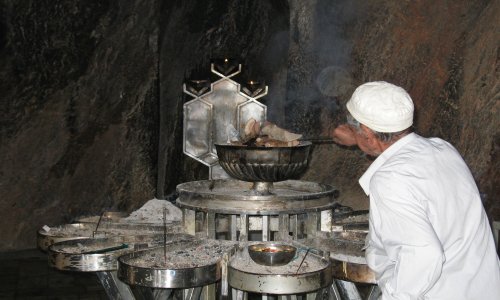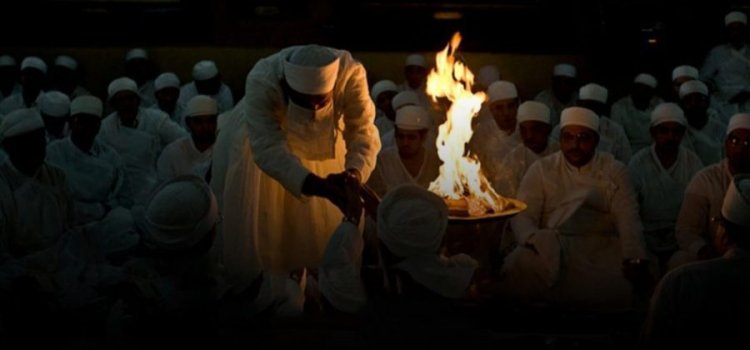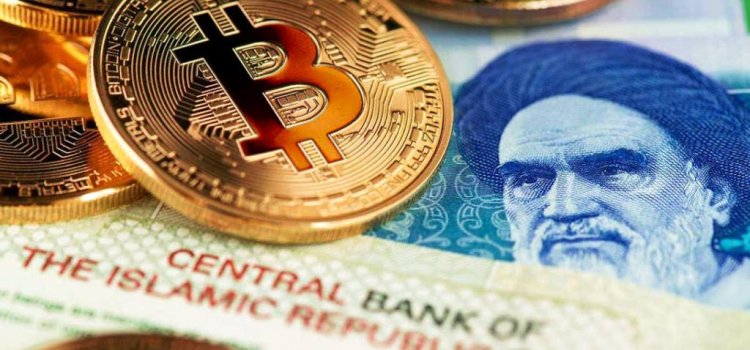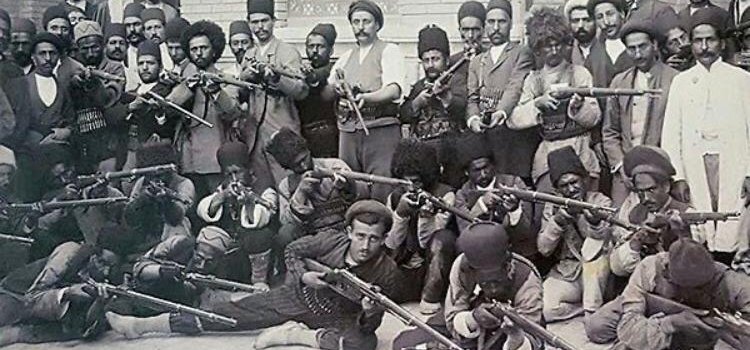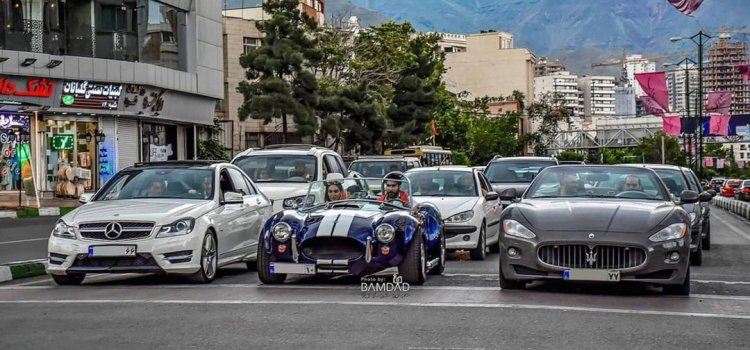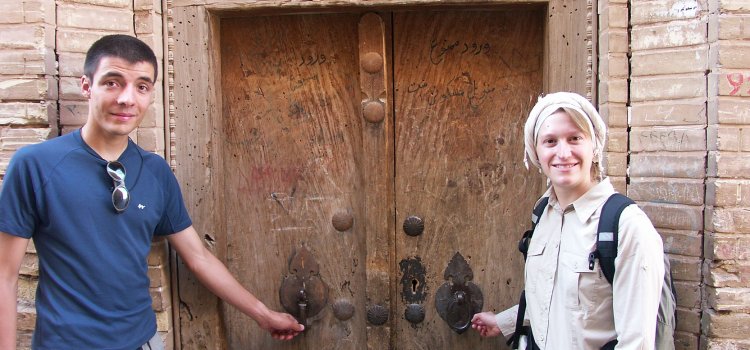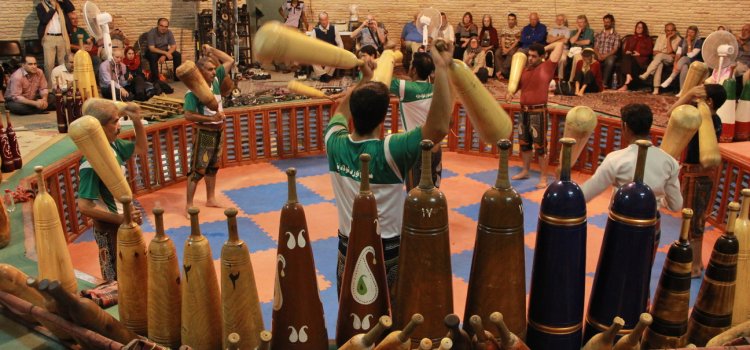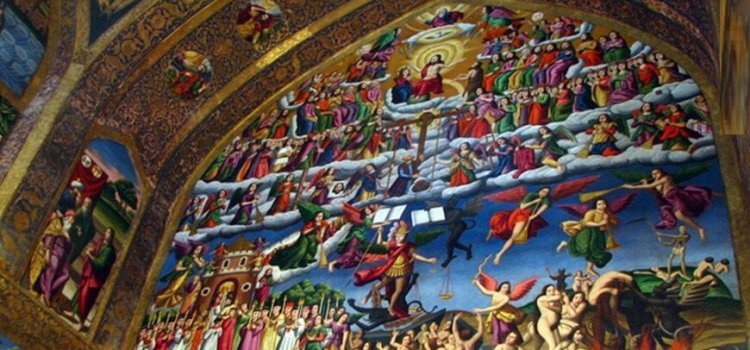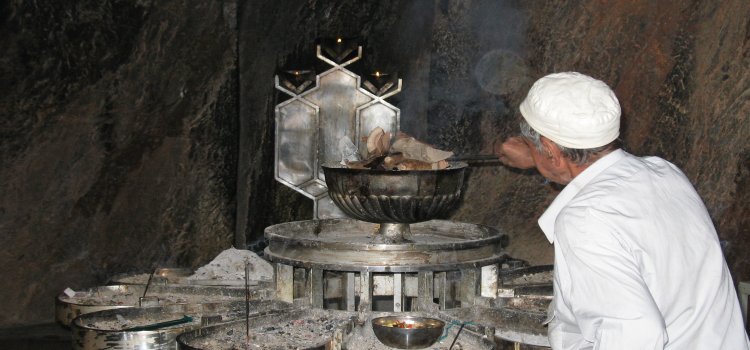Social classes in Ancient Persia
Persian society was modeled on a quadripartite scheme based on the Avesta, the sacred scriptures of the Zoroastrians.
Social classes in Ancient Persia
Persian society was modeled on a quadripartite scheme based on the Avesta, the sacred scriptures of the Zoroastrians.
The categories were: priests, warriors, farmers and artisans.
The first three were each under the protection of one of the Empire’s three great sacred fires.
Azar-Faranbagh for priests, Azar-Gushnasp for the King of Kings and warriors and Azar-barzin-Mihr for farmers.
Society in the Sassanid era was hierarchical. The word caste has been applied to designate its classes. Membership in a category was hereditary and the barriers to a higher level were, in principle, impenetrable.
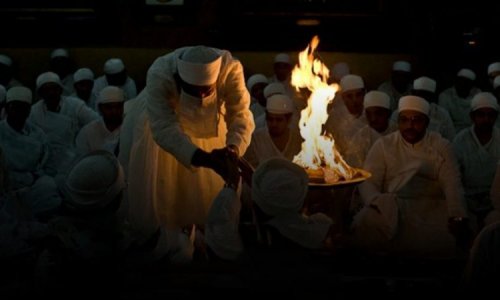
Persia and Bitcoin
The famous cryptocurrency is on the rise in Iran.
At a time when the giants of international finance are speaking out to warn of the risks and volatility of cryptocurrencies
Persia and Bitcoin
The famous cryptocurrency is on the rise in Iran. At a time when the giants of international finance are speaking out to warn of the risks and volatility of cryptocurrencies, Bitcoin is being validated as collateral in Iranian marriage contracts in place of bullion and cash. This shows how well it is integrated into the country’s financial system.
According to Bitooda, a digital currency research firm, Iran is the third country in the world for Bitcoin mining, after China and America.
Nearly 2 million of this currency, the most famous currency used in the digital currency market, has been mined and deposited in Iranians’ “wallets”, virtual wallets.
Iran, one of the most economically sanctioned countries in the world, has seized the opportunity of cryptocurrencies to circumvent the economic blockade. And Iranian youth, hit hard by unemployment, have found a possible source of income and daily occupation.
Since 2014, Bitcoin has gradually entered unofficial transactions, a choice for thousands of families
Iranian women wanting to send money to their children living abroad, or it is used for some kind of business transaction.
Mining farms have sprung up in the country, illegally imported mining devices are installed in old factories and disused garages. A further consequence of the sanctions crippling the Iranian economy.
Industry, the flagship of the economy for a while, replaced by modern factories fed by the virtual.
It was in these most remote places, in apartment rooms, or under the banisters that the first Bitcoins were generated.
Since 2015 these “farms” have been expanding more and more to barter cheap electricity in exchange for an encrypted code ready to be cashed with a single swipe of a finger.
A whole new market has emerged, from traffickers of “mining devices” to electrical technicians, to cable vendors and appliance repairers. A parallel network, an underground economy, having started autonomously and wildly, escaping government control.
The old dream of the treasure hunter has just come true and the “mining devices” are running at full speed to exploit their devices and decrypt the maximum number of valid blocks and thus pocket the jackpot.
Deep in the Iranian soul lies an intuition for scenting out opportunities and getting rich or fattening one’s heritage. They were able to take advantage of the depths of the oil wells. The Iranian people easily engage in risky businesses, such as tightrope walkers. The Iranian economy suffers from permanent inflation since the revolution, derived from international economic sanctions, and speculation is a second job for almost all Iranians, an example is: the frenzy of pyramid systems of all kinds that have pulverized the savings of many families in the 2010s.
Bitcoin is well established and present in the lives of Iranians at the most contested moment in its history. They ride this wave while waiting to see better days …
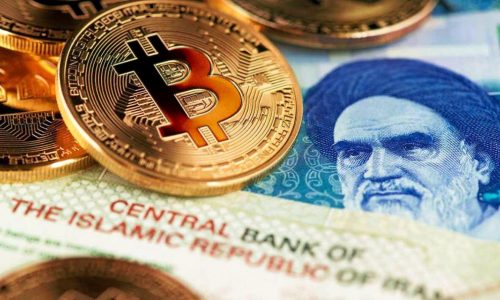
A page of iranian History
1909, Iran, the first Middle Eastern country to have a constitution since 1906, finds itself in chaos.
On the one hand, the king, supported by the Russians and taking advantage of the support of the Cossack brigade
A page of iranian History
1909, Iran, the first Middle Eastern country to have a constitution since 1906, finds itself in chaos.
On the one hand, the king, supported by the Russians and taking advantage of the support of the Cossack brigade, abdicates in favor of the crown prince, an act forced by the constitutionalists.
On the other hand the Majles suffers from the lack of sovereignty and the budget necessary to carry out its reforms, ideological differences also disturb the good understanding between parliamentarians.
Taghizadeh, the leader of the Democratic Party, some of whose members have Russian citizenship, opposing the demands of clerics in the legislature, is convicted of “ideological corruption”. He is condemned to death and flees the country.
His opponent, Seyyed Behbahani, representative of the moderate party, is assassinated by a radical activist as he prepares to read Taghizade’s sentence in the Majles court.
One of the heroes of this revolution is a chief of the Bakhtiari tribe, Sardar Asaad, close to the British and having sided with the constitutionalists. He led his tribal army to the capital, and worked for its liberation. He was rewarded and honored by being appointed governor of Tehran.
A decision was finally taken by the government, until then inert, to try to improve the financial situation of the country: the recruitment of an American financial mission and Swedish officers to organize an armed force capable of counterbalancing the power of the country. Cossack brigade. The choice falls on politically neutral countries.
Morgan Shuster (1877-1960), an American, was appointed Treasurer General of Persia and arrived in May 1911 at the head of a delegation of five financial advisers. It will work to put an end to financial abuses, such as corruption, privileges and foreign interference. All the evils from which the very young democracy suffered, which failed to change mentalities and the balance of power despite this revolution, is what he lets us understand in his autobiography.
Shuster also highlights the cultural distance between American advisers convinced of the benefits of a modern and efficient administration, and the reality of a traditional society, very hierarchical, where the complex relations of allegiance and parenthood guaranteed to individuals what ‘no rational law could offer them.
Shuster’s main enemies were the Russian and British delegations. The Russians still strongly present in northern Iran and the British trying to weaken the skills of the treasurer general, with the aim of obtaining the government’s approval for a new loan of 1,250,000 pounds.
Faced with so much hostility and pressure from the Russian-British “alliance”, Shuster was prematurely dismissed.
The Russians commit a coup in Tabriz, and the hanging of certain constitutionalists causing declarations of solidarity in Europe in socialist circles.
They will also show extreme brutality in Mashad on March 30, 1912, bombarding Imam Reza’s shrine and machine-gunning the crowd to disperse it killing 500 people.
The European press, occupied by the Titanic wreck, will not talk about it.
The situation was less dire in the south, where the population resisted British occupation.
Six years after the first demonstrations, the constitutional revolution was sinking into chaos.
One of the reasons for the failure of the constitution was due to the religious movement which had refused to follow through on a democratic logic, bounded by the limits of traditional theological discourse.
The differences of opinion of the constitutionalists were also fatal.
Reformers should no longer rely on outside support. Foreign interference was increasingly visible and brutal. Notably that of the British, on whom the Iranian liberals had initially based the hope of support against absolutism. Henceforth, it was with Russian socialist ideas that they were going to be united …
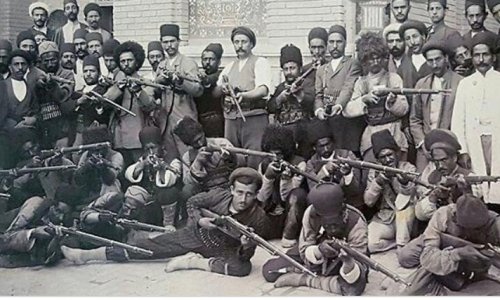
Bazaar
Stalls and shops lined up forming a spine, the economic center of cities in the Middle East. this has been called bazaar, since the dawn of time.
Bazaar
Stalls and shops lined up forming a spine, the economic center of cities in the Middle East. this has been called bazaar, since the dawn of time
A covered market, with a thousand and one entrances and alleys, airy and lighted. A setting that holds madrassas, caravanserais, schools and hammams. As it used to be a city inside a city.
A corridor where inhabitants meet, both merchants and customers.
A store, goods, there is as much food as diamonds.
Side by side, bakeries beside jewelry stores, each one to his own business,expertise and customers.
It wraps around the time and sets its course according to the currents and the surrounding environment..
The heirs are named after the parents, and the previous ones are remembered with nostalgia.
The bazaar has thousands of secrets and offers a chance to all beginners, with or without experience and money.
Don’t be surprised by the number of stalls, no competition problem, they all earn as the Omnipotent promises
Arranged marriage in Iran
Arranged marriage is a delicate question, often asked by travelers when visiting Iran, but a very cliché and often irrelevant topic for many Iranians.
Arranged marriages exist but represent only a small percentage of marriages in Iran.
Arranged marriage in Iran
Arranged marriage is a delicate question, often asked by travelers when visiting Iran, but a very cliché and often irrelevant topic for many Iranians.
Arranged marriages exist but represent only a small percentage of marriages in Iran.
Marriage is a kind of passage to adulthood and is essential if man want to position ourselves in society.
It is still a real institution.
But a problem arises thus: how do young people meet in Iran?
As co-education is prohibited at school from an early age, boys and girls evolve separately. There is therefore a glaring lack of contact.
The problems generated by this lack of diversity, this lack of knowledge of people of the opposite sex, cause a high number of divorces in Iranian society, one of the main challenges of which is the transition from a traditional society to a society modern.
Currently most marriages are based on personal choice.
Young people have the opportunity to meet and get to know each other in different forms: at the university which is a mixed space, through social networks which are widely used, through friends on the occasion of an outing or a party, in the street during a “dor-dor” where the boys flirt with the girls during a weekend drive.
Girls and boys, each in a different car, try their luck by driving around at night, to find a partner. The more luxurious the car, the higher the chances of success.
This causes heavy traffic at night on the main boulevards of the cities.
This “dor-dor” is one of the main hobbies of young people from the wealthy and middle classes, to get to know each other and start a relationship that could possibly lead to a marriage!
Window down, a phone number exchange at a red light, from the boys ‘car to the girls’ car parked next door, a nice smile from some and a flirtatious attitude from the others and off we go …
..a date at the cafe and an invitation to dinner, if the magic of love operates … if not, we do another round!
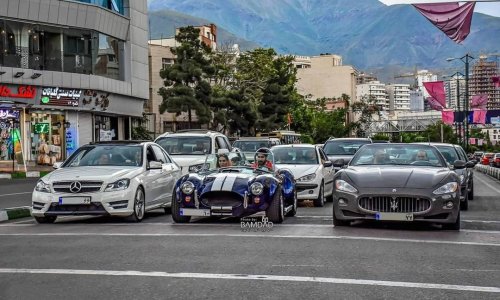
“Who is knogckin at the door?”
Knockers are not only decorative accessories hung on heavy wooden doors, they have a special cultural connotation.
Women inside houses had to wear the hijab in the presence of people outside the close family members knocking on the door.
“Who is knocking at the door?”
Knockers are not only decorative accessories hung on heavy wooden doors, they have a special cultural connotation. Women inside houses had to wear the hijab in the presence of people outside the close family members knocking on the door. There are two hammers on each door leaf, each having a different shape and a different tone. The circular one has a lower sound, indicates that a woman is standing in front of the door. The heavier, larger handle has a higher sound and tells us it is a man visiting the household.
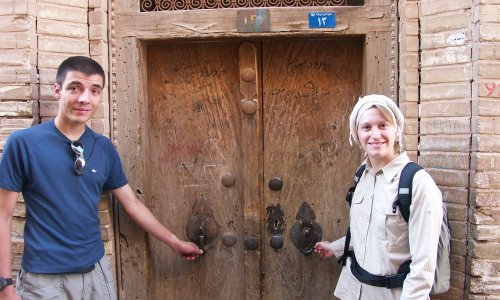
Zourkhaneh, traditional sport in iran
Zurkhane is an Iranian traditional sport which philosophy consists in mental and physical improvement.
The athletes not only build their body muscles, but also improve their morality and behaviour by performing ancestral movements.
Zourkhaneh, traditional sport in iran
Zourkhaneh is an Iranian traditional sport which philosophy consists in mental and physical improvement.
The athletes not only build their body muscles, but also improve their morality and behavior by performing ancestral movements.
The gentlemen gather in a small arena that is built slightly below street level to provide constant temperature. In the middle of the arena there is a round or octogonal sunken area named “Gowd”. The exercise starts with a warm up following the rythm of the Morshed, the master of ceremony who plays tombak and manage the training, singing traditional songs (mostly from Shanameh of Ferdowsi that is the epic of Iranian heroes and athletics). Then they start to play with some special instruments like wooden maces, shields, bows, which have been inspired from the antique weapons.
Some movements remind us the whirling Sufi dance.
The tradition dictates that the older athletes and If one is descendant of the Prophet of Islam (Seyed), have to be more respected, whatever their skills, experience or body condition. the ovation would turn to a salavat, the formula of praise and salutation to prophet Mohammad and his family.
It is said that the origin of this art goes back to the time that Iran was under Mongol domination, the persian warriors secretly trained to organize the insurrection against the invaders.
The entrance of the ceremonies are absolutely free for the spectators, but they can give money, collected in a vase for charities.

Vank Cathedral in Isfahan
Vank Cathedral,(congregational) the first and the main Armenian church in Isfahan was built in the middle of 17th century
and the differences of its plan to the classic ones has raised some legends and rumors, …
Vank Cathedral in Isfahan
Vank Cathedral,(congregational) the first and the main Armenian church in Isfahan was built in the middle of 17th century after the Armenian immigration forced by shah Abass who wanted to promote prosperity in his new capital, Isfahan.
Brick dome of church and some tiles working seem to be a derivation of Muslim mosques. The paintings are the combination of Byzantine style and Iranian miniature. This church is not in service any more and it is just used as a museum and for administrative matters. An ethnography museum near by shows the history of the Armenians since their arrival.
Zoroastrianism, Iranians ancient religion
“Zoroaster” is the name generally known in the West for the prophet of ancient Iran,
whose transformation of his inherited religion inaugurated a movement that eventually became the dominant religion in Iran up until the triumph of Islam.
Zoroastrianism, Iranians ancient religion
Zoroastrianism is Iranians ancient religion, Zoroaster is the name generally known in the West for the prophet of ancient Iran, whose transformation of his inherited religion inaugurated a movement that eventually became the dominant religion in Iran up until the triumph of Islam. Controversy over Zaraθuštra’s date has been an embarrassment of long-standing to Zoroastrian studies. If anything approaching a consensus exists, it is that he lived ca. 1000 BC.
There is really nothing in the Gathas (oldest part of Avesta , zoroastriens holy book) which might give a clue where Zoroaster lived or the areas in which he was active.
Even though there are later traditions which place him in Azerbaijan and Media, it is more reasonable to locate Zoroaster somewhere in eastern Iran along with the rest of the Avesta. The Gathas offer scant information about the life of the prophet. Apparently, Zaraθuštra’s position within his own society became so precarious that he was forced to flee. Ethics plays a predominant role in Zaraθuštra’s thought. Part and parcel of Zaraθuštra’s ethical vision was the belief in rewards and punishments in the afterlife. Although it is impossible to know whether or not it was his innovation, Zaraθuštra was the first in recorded human history to articulate a clear theology of heaven for the righteous and a hell for the wicked.
